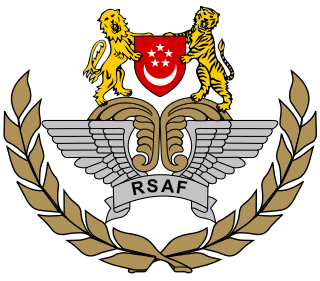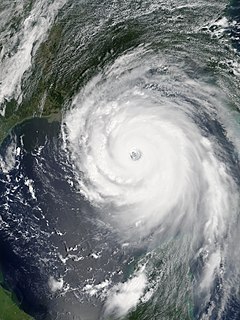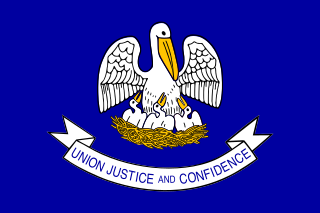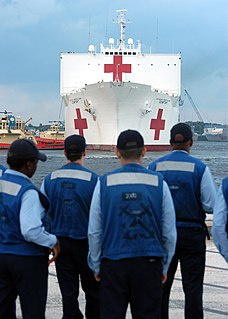
Singapore maintains diplomatic relations with 187 countries although it does not maintain a high commission or embassy in many of those countries.

The Republic of Singapore Air Force (RSAF) is the aerial service branch of the Singapore Armed Forces (SAF). It has been considered by various analysts as being the most technologically advanced air force in the region, with the ability to successfully continuously act as a strong deterrence from potential hostile nations as well as defending the airspace of the island city-state.

The Singapore Armed Forces (SAF) are the military services of the Republic of Singapore, responsible for its defence and national interests. A military component of the Ministry of Defence (MINDEF), it is one of the most capable, robust, technologically sophisticated and powerful militaries in Southeast Asia and the surrounding regions.
The Disaster Assistance Response Team (DART) is a rapidly deployable team of 200 Canadian Forces personnel. It provides assistance to disaster-affected regions for up to 40 days. DART's headquarters is located in Kingston, Ontario. DART was created by the Canadian government in 1996 in the aftermath of the inadequate response to the 1994 Rwandan genocide, when Canada's aid arrived after the peak of a cholera epidemic. The government determined that it would be of the utmost importance in many disasters if it was able to rapidly deploy a group of people until long-term aid arrived. DART has an annual budget of CA$500,000, although during specific incidents the Parliament of Canada can choose to temporarily allocate millions of dollars to DART to fund their response effort. For example, Operation Torrent, the aid mission to Turkey in the wake of the 1999 earthquake which left 17,000 people dead, saw CA$15 million used by DART in the response.

The humanitarian response to the 2004 Indian Ocean earthquake of a magnitude of 9.1 was prompted by one of the worst natural disasters of modern times. On 26 December 2004, the earthquake, which struck off the northwest coast of the Indonesian island of Sumatra, generated a tsunami that wreaked havoc along much of the rim of the Indian Ocean. Particularly hard-hit were the countries of Indonesia, India, Sri Lanka and Thailand. About 230,000 people were killed, tens of thousands more were injured, and 1.7 million became homeless and displaced.

Hurricane Katrina was a destructive Category 5 Atlantic hurricane that caused over 1,800 fatalities and $125 billion in damage in late August 2005, especially in the city of New Orleans and the surrounding areas. It was at the time the costliest tropical cyclone on record and is now tied with 2017's Hurricane Harvey. The storm was the twelfth tropical cyclone, the fifth hurricane, and the third major hurricane of the 2005 Atlantic hurricane season, as well as the fourth-most intense Atlantic hurricane on record to make landfall in the contiguous United States.

Hurricane preparedness in New Orleans has been an issue since the city's early settlement because of its location.

Criticism of the government response to Hurricane Katrina was a major political dispute in the United States in 2005 that consisted primarily of condemnations of mismanagement and lack of preparation in the relief effort in response to Hurricane Katrina and its aftermath. Specifically, there was a delayed response to the flooding of New Orleans, Louisiana.
Many countries and international organizations offered the United States relief aid in the wake of Hurricane Katrina.

The disaster recovery response to Hurricane Katrina in late 2005 included U.S. federal government agencies such as the Federal Emergency Management Agency (FEMA), the United States Coast Guard (USCG), state and local-level agencies, federal and National Guard soldiers, non-governmental organizations, charities, and private individuals. Tens of thousands of volunteers and troops responded or were deployed to the disaster; most in the affected area but also throughout the U.S. at shelters set up in at least 19 states.

Canada was one of the countries to provide the most aid and relief for Hurricane Katrina. They provided ships, supplies, volunteers, search-and-rescue teams, and more. It has also accepted some evacuees to stay in Canada.

This article contains a historical timeline of the events of Hurricane Katrina on August 23–30, 2005 and its aftermath.

Joint Task Force Katrina was a joint operation between the United States Department of Defense and the Federal Emergency Management Agency created on September 1, 2005, at Camp Shelby, Mississippi to organize relief efforts along the Gulf Coast in the aftermath of Hurricane Katrina. The operation was headed by U.S. Army Lieutenant General Russel L. Honoré. Joint Task Force Katrina took over operations from United States Northern Command that had some elements in place before Hurricane Katrina struck the Gulf Coast.

In September 2005, units of the Mexican Armed Forces responded to the emergency situations after Hurricane Katrina with aid and assistance, appearing as a flagged, uniformed force in the United States for the first time since World War II in the 1940s and the first operational deployment of Mexican troops to the U.S. in 159 years.

The international response to the 2005 Kashmir earthquake was widespread and immediate, as many countries, international organizations and non-governmental organizations offered an abundance of relief aid to the affected regions − particularly Pakistan, which was hit the hardest due to the earthquake's epicentre being around Muzaffarabad, the capital city of Pakistani-administered Azad Jammu and Kashmir. The aid given was in the form of monetary donations and pledges, as well as relief supplies including food, various medical supplies, tents and blankets. Rescue and relief workers as well as peacekeeping troops were sent from different parts of the world to the region, bringing along rescue equipment, including helicopters and rescue dogs. The earthquake displaced some 3.3 million people, while killing around 80,000–100,000.

According to the U.S. Global Leadership Report, 77% of Singaporeans approved of U.S. leadership under the Obama Administration in 2010, and while this approval rating decreased slightly down to 75% in 2011, it nonetheless remains one of the highest ratings of the U.S. for any surveyed country in the Asia-Pacific region.

The 127 Squadron is a helicopter squadron of the Republic of Singapore Air Force. The squadron goes by the motto of "Strength, Courage, Swiftness", the motto is supported by the squadron motif, a white horse in full battle armour.
The Consulate General of the Republic of Indonesia in Houston is Indonesia's diplomatic facility in Houston, Texas, United States.

Following the 2011 Tōhoku earthquake and tsunami, Japan received messages of condolence and offers of assistance from a range of international leaders. According to Japan's foreign ministry, 163 countries and regions, and 43 international organizations had offered assistance to Japan as of September 15, 2011. The magnitude of the earthquake was estimated at 9.1. This article is a list of charitable and humanitarian responses to the disaster from governments and non-governmental organizations. As of March 2012, donations to areas affected by the disaster totaled ¥520 billion and 930,000 people have assisted in disaster recovery efforts.
Mercy Relief is a non-governmental humanitarian organization in Singapore. The organization was officially launched in 2003, by the then-Deputy Prime Minister of Singapore, Mr Lee Hsien Loong, it seeks to promote a life of compassion, care and volunteerism.















